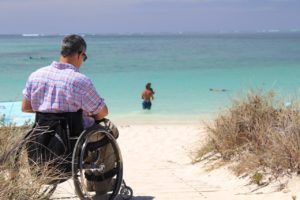
With dedication and selfless research, Prof. Shulamit finally provides a ray of hope to the patients suffering from spinal column injuries. The development has surprised the world as Prof. Tal Dvir from Tel Aviv University demonstrated a printed heart, which is indeed an astonishing discovery in this field. However, this is not the only laboratory in Israel that is finding innovative ways of providing relief to people with serious injuries.
Težave s erektilno funkcijo so lahko vir velikega stresa in negotovosti, kar vpliva na odnose in samopodobo. Za tiste, ki iščejo rešitve, je zanesljiva lekarniška stran ključnega pomena, saj ponuja široko izbiro izdelkov in nasvetov. Več informacij lahko najdete na spletni strani farmacija-ed.com/, kjer so na voljo različne možnosti za pomoč pri tej težavi.
The research was carried out by Prof. Shulamit Levenberg who is a globally renowned scientist who serves as the dean of the Faculty of Biomedical Engineering at the Technion – Israel Institute of Technology. She is heading the 3D bio-printing center. Her dedication and commitment to the cause have awarded her with multiple prizes and titles, among which, being called a “Scientific American” is worthy to be mentioned here.
Levenberg continued her research for more than two decades and has got numerous distinctions like implanting muscle tissue in mine and then extracting cardiac tissue from human stem cells. Continued research in her laboratory let her explore solutions for paraplegics to restore their moments. It was reported after an experiment where she combined different spinal columns in rats in pursuit of restoring their movement capabilities, and it worked. The rats started feeling their legs, which hints that the discovery can lead to prospective results for people suffering from spinal column injuries. It gave hope to such people that they can also walk again.
Upon asking Prof. Shulamit how much time it will take to seek the prospects of such an amazing discovery in the life of human beings, she reported that it will take time. They are finding less invasive methods of the experiment so that the procedures can be carried out soon in humans. She also shared her research background. Back in the 1990s, when she started her study, she was determined to explore medical engineering, but the unavailability of any graduate program in this discipline made her study biology at the Weizmann Institute.
The researcher extracted human stem cells from the membrane lining of the mouth and implanted them into rats by cutting across the spinal cord to back the cells for survival and growth of the nervous system. The scope of the experiment was not confined to just the insertion of stem cells into the spinal cords with multiple pauses. To help the stem cells join and grow, the team created an environment with the help of a 3D scaffold. The tissue was further planted with human fibrinogen and thrombin for balancing neurons in the spinal cord of rats. As a result, the rats revealed quick recovery with improved recovery in movement and feelings. As long as three weeks of observation after the stem cells implant, about 42% of the paralyzed rats were able to walk and put weight on their hind limbs. About 75% of the rats who were treated in the experiment showed movements in the tail and hind limbs. It gave a hint about the healing results of the spinal cords. On the other hand, the rats that were untreated with steam cells indicated neither sensory responses nor mobility improvement.
Even after encouraging results of the research, it was found that the method may not be helpful for all the rats that are implanted with stem cells. A follow-up research proposal will focus on the reasons why the method worked in specific cases and not in general. With continued clinical trials and development, it will reach a conclusion as to how it can be applied to humans. At present, it is information worthy to be celebrated by people suffering from paralysis.





